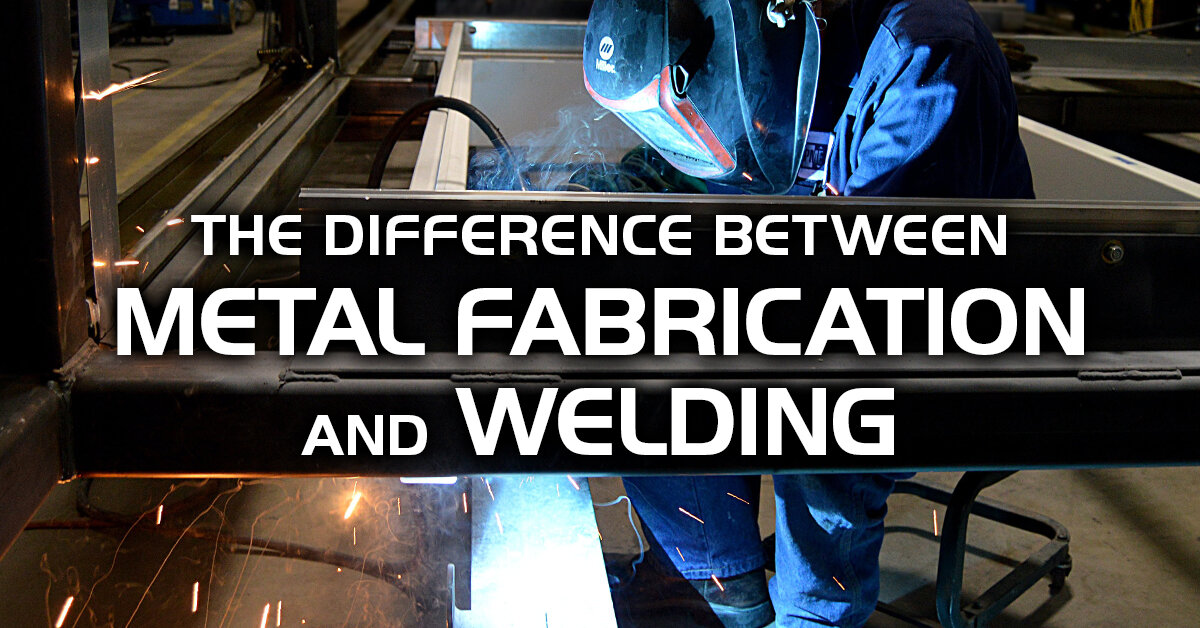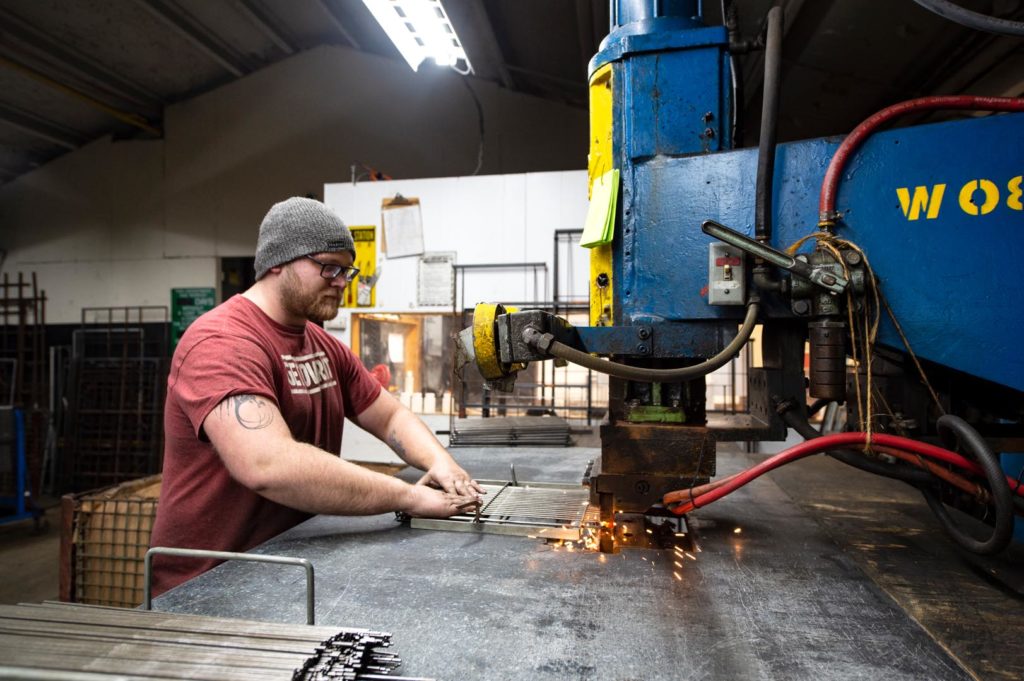Typical Welding Fixing Issues and Just How to Address Them Successfully
Welding repair services often experience a range of issues that can endanger the stability of the end product. Typical problems include inadequate penetration, porosity, and misalignment, among others. Each flaw offers distinct challenges that require certain strategies for resolution. Comprehending these problems is important for welders aiming to improve their abilities and end results. This discussion will certainly check out these usual welding repair service concerns and reliable techniques to resolve them.
Poor Penetration
Poor infiltration takes place when the weld metal falls short to completely fuse with the base product, leading to weak joints and prospective structural failures. This problem often originates from insufficient warmth input, incorrect electrode angle, or inappropriate welding rate. Welders may experience poor infiltration as a result of a miscalculation of the required specifications for a particular material thickness or kind. Furthermore, contamination on the base material's surface can impede effective bonding, intensifying the problem. To address inadequate penetration, welders must ensure proper setups on their devices and keep a tidy work surface area. Regular examination of welds is recommended to determine any shortages early, enabling prompt corrections and the avoidance of compromised architectural stability in bonded assemblies.
Porosity
Porosity is a common issue in bonded joints that shows up as little gas bubbles entraped within the weld metal. This issue can jeopardize the stability of the weld, resulting in reduced toughness and possible failing under anxiety. Fabrication. Porosity usually emerges from contamination, dampness, or inappropriate welding methods, which allow gases to get away into the molten weld swimming pool. To address porosity, welders need to ensure proper surface area preparation, keep a clean workplace, and utilize ideal welding specifications. Furthermore, picking the appropriate filler material and protecting gas can mitigate gas entrapment. Regular evaluation and screening of welds can aid recognize porosity early, ensuring timely rehabilitative actions are taken, thereby maintaining the quality and dependability of the bonded structure
Imbalance
Misalignment in welding can emerge from numerous elements, including incorrect setup and thermal expansion. Comprehending the origin is essential for reliable resolution. Numerous modification techniques are offered to straighten parts and guarantee structural stability.
Root causes of Imbalance
Welding misalignment usually stems from a variety of underlying problems that can endanger structural integrity. One key reason is improper fit-up of components before welding, which can bring about voids and uneven surfaces. Variants in thermal development throughout the welding procedure can likewise result in distortion, specifically if the products being signed up with have different coefficients of expansion. Additionally, inadequate fixturing and clamping may fall short to hold parts safely in position, causing motion throughout welding. Badly maintained equipment, including welding machines and tools, may present disparities in the weld bead, additional contributing to imbalance. Operator mistake, stemming from insufficient training or experience, can likewise play a considerable duty in creating misaligned welds.

Correction Methods Available
Attending to imbalance efficiently calls for a mix of corrective strategies customized to the particular concerns handy. One common technique is using jigs or fixtures to hold components in the correct setting during welding, guaranteeing consistent alignment. In addition, preheating the materials can help in reducing distortion and boost fit-up. For substantial misalignment, mechanical adjustment strategies, such as utilizing hydraulic jacks or clamps, can be utilized to fix the position prior to welding. Post-weld warmth treatment may also be essential to alleviate tensions created by imbalance. Cautious assessment and modification throughout the configuration stage can prevent misalignment issues from becoming substantial issues, promoting a smoother welding process and improving total architectural stability.
Distortion
Distortion is an usual challenge in welding that can emerge from various variables, consisting of irregular heating and cooling. Understanding the sources of distortion is essential for implementing efficient prevention methods. Resolving this issue not just boosts architectural stability however likewise improves the general high quality of the weld.
Sources of Distortion
When based on the intense warm of welding, products often go through modifications that can cause distortion. This sensation largely develops from thermal development and tightening during the welding process. As the weld location heats up, the product broadens; upon air conditioning, it acquires, which can develop internal tensions. Additionally, uneven heating across a workpiece can exacerbate these tensions, causing bending or flexing. The kind of material also plays a considerable role; steels with varying thermal conductivity and coefficients of expansion might respond in a different way, causing unforeseeable distortions. Moreover, inadequate joint layout and poor fixturing can add to imbalance during welding, increasing the likelihood of distortion. Recognizing these reasons is essential for effective welding repair service and avoidance strategies.
Prevention Techniques
Reliable avoidance strategies for distortion during welding concentrate on managing warmth input and guaranteeing proper joint design. Preserving a consistent warm input aids to decrease thermal expansion and contraction, which can lead to distortion. Making use of strategies such as preheating the work surface can additionally minimize the temperature level gradient, advertising consistent home heating. In addition, picking appropriate joint styles, such as T-joints or lap joints, can enhance stability and minimize tension focus. Carrying out proper fixturing to secure the workpieces in area further help in maintaining positioning throughout the welding process. Staggered welding sequences can distribute heat much more evenly, preventing localized distortion. By using these approaches, welders can considerably lower the likelihood of distortion and enhance the general quality of their welds.
Breaking
Breaking is a common concern come across in welding repair work, you could try these out usually arising from numerous aspects such as inappropriate air conditioning prices, material option, or insufficient joint prep work. The occurrence of splits can substantially compromise the honesty of the weld, leading to prospective failings during procedure. To resolve this problem, welders should initially evaluate the origin, making certain that products are compatible and appropriately chosen for the specific application. In addition, regulating the cooling rate during the welding procedure is crucial; rapid air conditioning can induce anxiety and cause breaking. Correct joint style and prep work also add to decreasing the risk. Carrying out these approaches can enhance weld high quality and durability, inevitably lowering the possibility of cracking in finished weldments.

Incomplete Combination
A substantial problem in welding repairs is incomplete blend, which happens when the weld metal does not adequately bond with the base material or previous weld passes - Montana Mobile Welding and Repair Belgrade. This problem can lead to weaknesses in the joint, potentially jeopardizing the honesty of the bonded structure. Aspects contributing to insufficient fusion include insufficient heat input, improper welding strategy, and contamination of the surface areas being joined. To address this problem effectively, welders must ensure proper pre-weld cleansing and surface preparation, as well as change their welding specifications to attain adequate infiltration and fusion. Regular assessment throughout the welding process can also aid determine incomplete fusion early, permitting timely rehabilitative actions to improve the overall quality of the weld
Overheating
While welding repair work can enhance architectural stability, overheating offers a significant obstacle that can bring about product degradation. Excessive heat throughout welding can modify the mechanical residential or commercial properties of metals, causing minimized toughness, increased brittleness, and bending. This sensation is particularly crucial in high-stress applications where structural dependability is extremely important. Identifying overheating can involve visual assessments for discoloration or distortion, in addition to keeping track of temperature level during the welding procedure. To mitigate the risks connected with overheating, welders must utilize proper techniques, such as regulating heat input, readjusting travel rate, and using ideal filler products. In addition, applying pre- and post-weld heat therapies can help bring back material residential or commercial properties and enhance the general high quality of the repair service, guaranteeing long-lasting efficiency and safety.
Often Asked Inquiries
What Are the Common Indications of a Welding Problem?

Exactly How Can I Check My Welds for Top quality?
To check welds for high quality, one can utilize visual assessments, ultrasonic testing, and radiographic techniques. Each technique ensures structural integrity, recognizes flaws, and validates adherence to defined criteria, inevitably enhancing the dependability of the bonded joints.
What Safety and security Precautions Should I Take While Welding?
When welding, one should prioritize safety and security by putting on proper personal safety devices, ensuring appropriate air flow, safeguarding combustible materials away, keeping a clean workspace, and understanding environments to stop injuries and crashes.
Can I Fix a Weld Without Renovating the Entire Joint?
Repairing a weld without redoing the whole joint is feasible, depending on the damages (Welding). Techniques such find out this here as grinding, including filler product, or utilizing a welding procedure can effectively attend to certain imperfections while protecting the bordering framework
What Tools Are Crucial for Efficient Welding Repairs?
Important devices for reliable welding repair work include a welding maker, cord brush, grinder, protective gear, clamps, and filler materials. Each tool plays an essential role in ensuring high quality and safety during the fixing process. Porosity typically occurs from contamination, wetness, or inappropriate welding techniques, which allow gases to get away right into the molten weld pool. Inadequately maintained devices, including welding devices and tools, may introduce inconsistencies in the weld bead, further contributing to imbalance. When subjected to the extreme heat of welding, materials often go through modifications that can lead to distortion. Fracturing is an usual problem run into in welding fixings, often resulting from various elements such as inappropriate cooling rates, material option, or inadequate joint preparation. A considerable concern in welding fixings is insufficient fusion, which takes place when the weld metal does not effectively bond with the base product or previous weld passes.